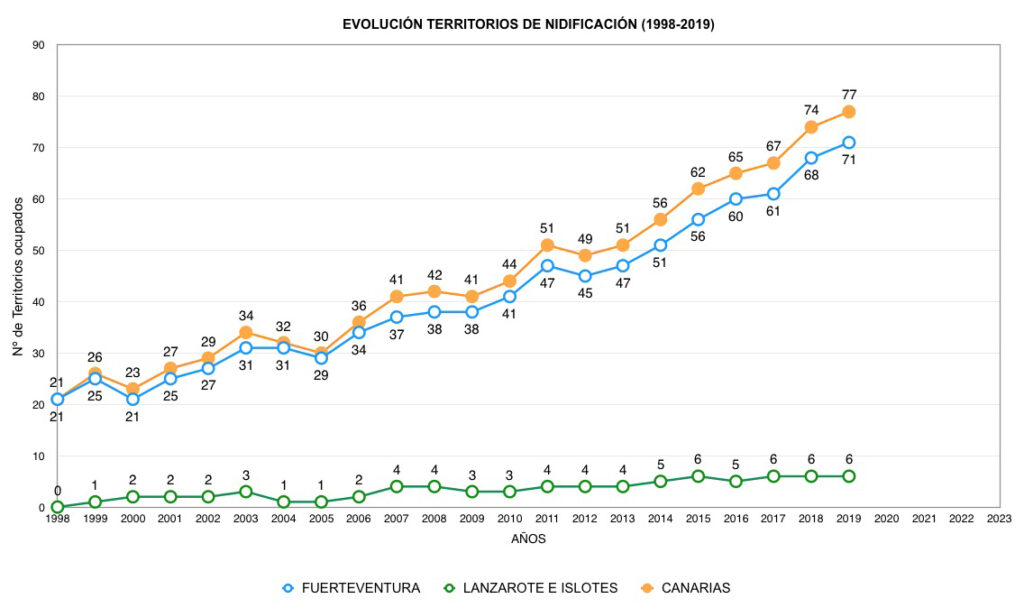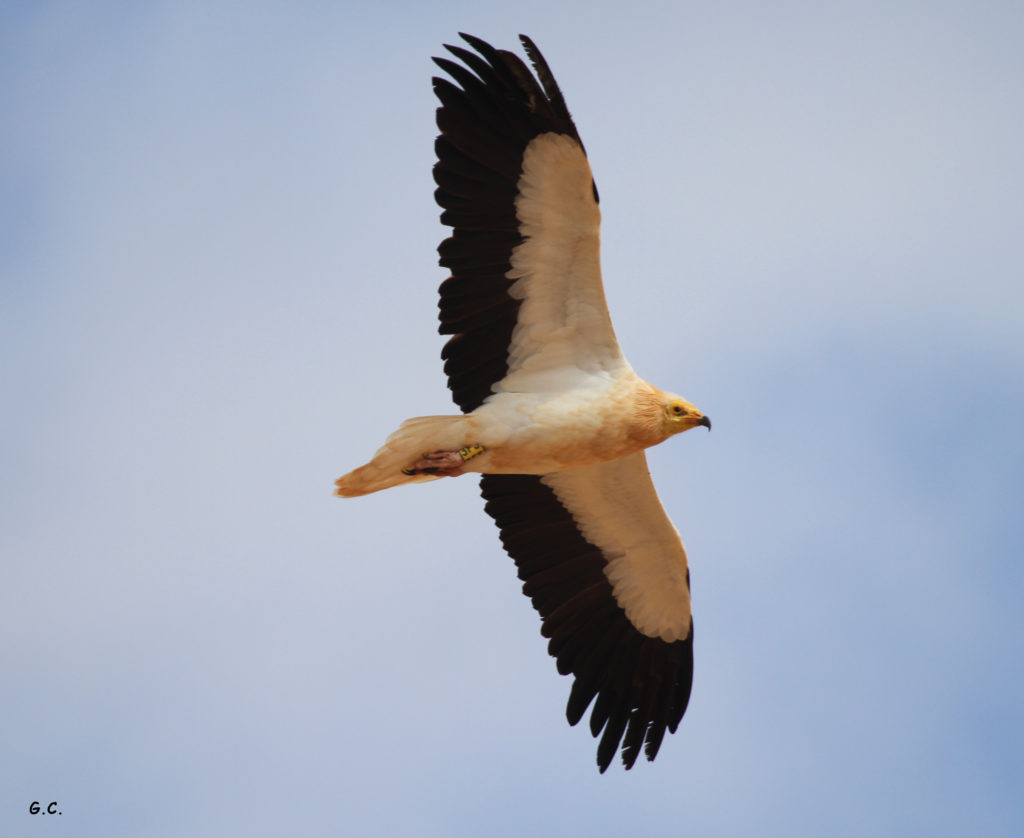At the end of February 2019, the 2020 monitoring campaign of the Egyptian vulture population in the Canary Islands began, as part of action D.1 of the LIFE Egyptian vulture project.
This monitoring is carried out by the working group of the Estación Biológica de Doñana-CSIC headed by Dr. José Antonio Donázar, coordinated from Directorate General to fight climate change and for the environment of the Gobierno de Canarias, this year with some difficulties because of the COVID-19 emergency.
This year’s preliminary data seem to indicate that there will be a further increase in the number of reproductive territories in Fuerteventura and, probably, also in Lanzarote; in total, 80 reproductive units may be exceeded, although this year the reproductive outcome could be very irregular.
This would confirm the positive trend of the Egyptian vulture population observed in recent years. In 2019, 77 breeding territories were identified, 71 of which in the Island of Fuerteventura and 6 between Lanzarote and the Archipelago Chinijo, it means an increase of 4% compared to the previous year.

Furthermore, the population was made up of at least 361 individuals, that is, 12 specimens more than the previous year (+ 3.4%). There are 163 breeding specimens (151 in Fuerteventura and 12 in Lanzarote) while 198 non-breeding vultures have been registered. 90% of the specimens of the population are equipped with identification systems. Only 40 specimens do not have any type of identification ring.
Despite these data, 2019 was one of the worst years of the historical series in terms of reproductive outcome: only 28 fledged, representing 63% of the number of fledged offspring in 2018, for a productivity of 0.33%. Although the unnatural mortality of the population has decreased, between October 2018 and October 2019, five individuals were detected, one from electrocution, two others from possible electrocution and two from unknown causes.This results in the death of three more Egyptian vultures compared to the same period in 2018. Two other vultures were admitted to recovery centers, one for intoxication and one debilitated; both were able to be freed again in nature.


